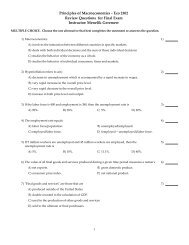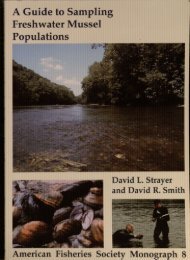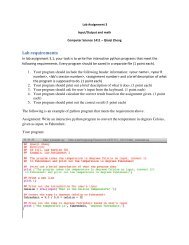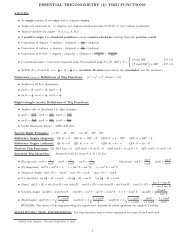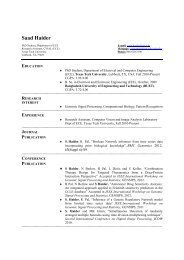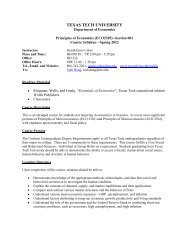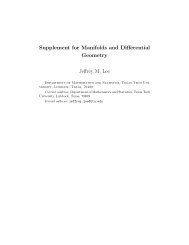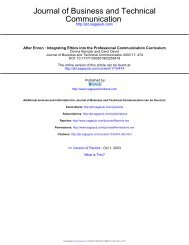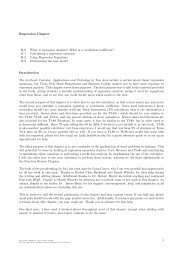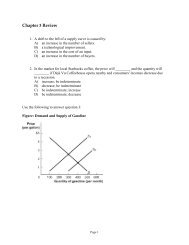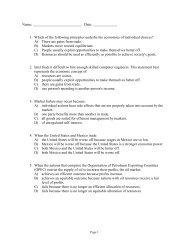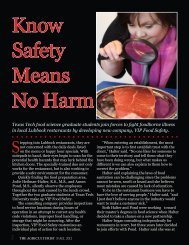Download - MyWeb - Texas Tech University
Download - MyWeb - Texas Tech University
Download - MyWeb - Texas Tech University
Create successful ePaper yourself
Turn your PDF publications into a flip-book with our unique Google optimized e-Paper software.
The 2012 Season of the Chan Chich Archaeological Project<br />
Houk’s [this volume] discussion of the historic<br />
village and chicle camp). However, when<br />
the camp was closed and the workers moved<br />
prior to his arrival in March 1931, he decided<br />
not to do any excavations at Kaxil Uinic and<br />
instead conducted excavations near the village<br />
of San José (Thompson 1963). In the San José<br />
report, Thompson (1939:280) published a brief<br />
description of Kaxil Uinic and the structures<br />
associated with it: “[m]ounds, sculptured<br />
stela, plain altar. Second group on west bank<br />
of R. Holmul (Bravo) one league southeast.”<br />
Thompson (1963:233) later published his<br />
description of the chicle camp of Kaxil Uinic<br />
in Maya Archaeologist as “…huts scattered<br />
around a dirty water hole…”<br />
After Thompson’s departure from British<br />
Honduras, archaeologists would not study the<br />
area for over 50 years. The land where Kaxil<br />
Uinic is located was once owned by the Belize<br />
Estates Land Produce Company. In the 1980s a<br />
Belizean named Barry Bowen purchased part of<br />
the former holdings, including the land where<br />
the ruins of Kaxil Uinic are located. Today, this<br />
property is known as Gallon Jug Ranch. The<br />
archaeological site of Chan Chich, also situated<br />
on the property, was chosen as the location of a<br />
jungle lodge (Houk 2011a:5). During the 1987,<br />
1988, and 1990 field seasons of the Rio Bravo<br />
Archaeological Project, Thomas Guderjan<br />
(1991:35) and his teams conducted mapping of<br />
the ruins at Chan Chich.<br />
Guderjan et al. (1991:59) also recorded a site<br />
called E’kenha, which Houk (this volume) has<br />
concluded is actually the site Thompson referred<br />
to as Kaxil Uinic. Guderjan’s crews mapped 12<br />
structures and “a very badly damaged carved<br />
stela and altar” at the site, but conducted no<br />
excavations (Guderjan et al. 1991:59).<br />
Following the Rio Bravo Archaeological<br />
Project, Brett A. Houk conducted formal<br />
archaeological investigations at Chan Chich in<br />
1996–1999, 2001, and again in 2012. During<br />
the 1996 CCAP field season Houk (2011b:13):<br />
…discovered a sacbe running west<br />
from Chan Chich, but the length of<br />
the sacbe was never determined. It is<br />
hypothesized that it connects Chan<br />
Chich to Kaxil Uinic. If confirmed, this<br />
would be an important discovery; thus<br />
far no sacbe terminus group has been<br />
documented in the eastern half of the<br />
Three Rivers Region.<br />
The site of Kaxil Uinic is 2.6 km west of Chan<br />
Chich, with a bajo located between the two<br />
sites. The aguada and the associated historic<br />
chicle camp described by Thompson (1963)<br />
are about 500 m south of Kaxil Uinic ruins,<br />
on what is today Yalbac Ranch. The La Lucha<br />
Escarpment is about 900 m west of the ruins.<br />
Kaxil Uinic is on a small rise west of the bajo.<br />
RESEARCH DESIGN<br />
As discussed below, due to the condition of<br />
the vegetation at the prehistoric site we were<br />
unable to completely follow through with<br />
our original research design. The vegetation<br />
was very thick and there were many felled<br />
trees as a result of a hurricane that struck the<br />
area in 2010. Therefore, the original research<br />
design had to be almost completely revised<br />
to conduct investigations at the site. Below is<br />
an explanation of the original and modified<br />
versions of the research design.<br />
Original Research Design<br />
We had planned to clear the vegetation in the<br />
two courtyards at Kaxil Uinic to enable better<br />
visibility of the structures, monuments, and<br />
features. A datum was to be established in the<br />
western courtyard (southwest of Structure 3),<br />
and an east-west oriented baseline was to be cut<br />
extending about 200 m in both directions. At<br />
25-m intervals along the baseline, we planned<br />
46



